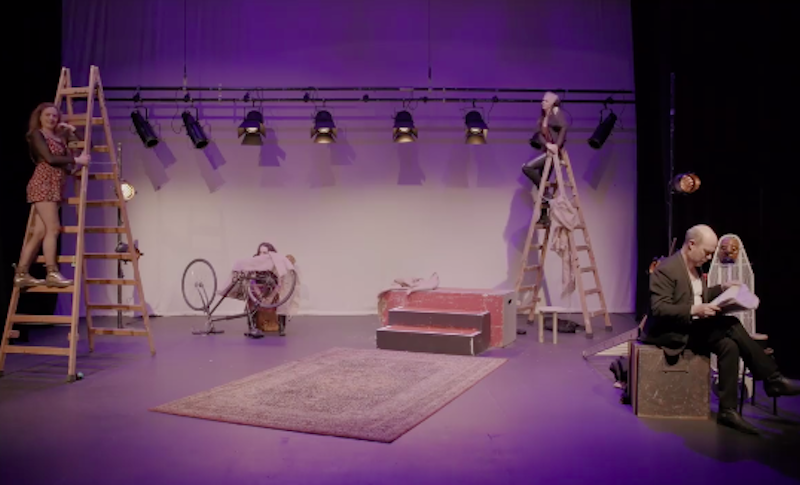
Written by Emma Donoghue – oscar-nominated writer of Room – and staged by The Corps Ensemble, Kissing the Witch follows four women who each have a personal story of self-empowerment. The show, which had its digital premiere as part of The Axis Ballymun’s Otherworld Festival, uses fairytale tropes to explore the relationships and intimacy at play between the women.
In a post-show discussion hosted by The Axis Ballymun, Emma Donoghue explained that the story came about as a result of being asked to write a book of feminist fairytales, given her lifelong interest in them. By placing the tales in the “first-person” of their female protagonists, “it brings out a completely different aspect to when you’re ‘overhead camera’ doing the agreed communal wisdom”, Donoghue said.
Donoghue also outlined that, as a writer, she’s “very interested in point of view”. She pondered that this may have stemmed from the realisation, growing up, that “I see everything a bit differently from the people around me, and what would they think if they saw it from my point of view?”. “It’s something that I think about a lot before I begin a piece of fiction”, she added.
This was felt in the recurring sentiment of the show: “Tell me your story”. The witch – who was portrayed in the production as the three figures of the maiden, the mother and the crone – began by emphasising the importance of the individual’s story. She explained that everyone has a story and how listening to the stories of others can lead you to important life lessons.
The set was sparse, but this near-empty space allowed the story to take on a world of its own. It also allowed this world to be changed entirely by the re-positioning of ladders or sitting down at the bicycle-turned-spinning wheel. Despite the lack of background, this simplicity worked in bringing the stories to the fore.
The costume, designed by Mary Donoghue, was equally simple. Her clever use of reversible clothing and a simple colour scheme reinforced the imaginative nature of the show and allowed for the actors to change characters, or the characters to change roles. At one point for instance, an ambitious maid asked the princess to take off her dress (represented by a beige cardigan) and swap it with hers. In swapping “dresses”, the two characters changed roles – the maid became the princess and the princess became her servant.
The show’s final story also demonstrated this underlying theme of power and empowerment and emphasised how important it is for women to use their voices. A fisherman’s daughter, longing for the love of a wealthy merchant, asked the witch to take her voice, and in doing so, to make her more appealing to him. Upon finding him unfaithful, the girl returned home disillusioned, only for the witch to reveal that she had never taken the girl’s voice – the girl had refused to use it.
In a poignant moment between the two characters, which embodied the overarching theme of the play, the girl finally realised that her silence didn’t make her stronger or more desirable, it left her dependent and open to manipulation. Taking charge in her own way, she then kissed the witch in return for the lesson. In the closing moments, as the pair became established as lovers, the witch remarked that she was old enough to be the girl’s mother, and, in a brilliant finale, the girl responded: “I’m old enough to know that you’re not.”
Overall, the play presented a complex and tender exploration of female relationships and the importance of being heard. It also reflected on the power dynamics of the fairytale world (and by extension, our own) and it emphasised the fact that empowerment comes not from dependence on someone else, but from using one’s own voice.






